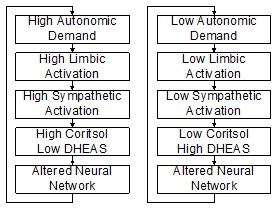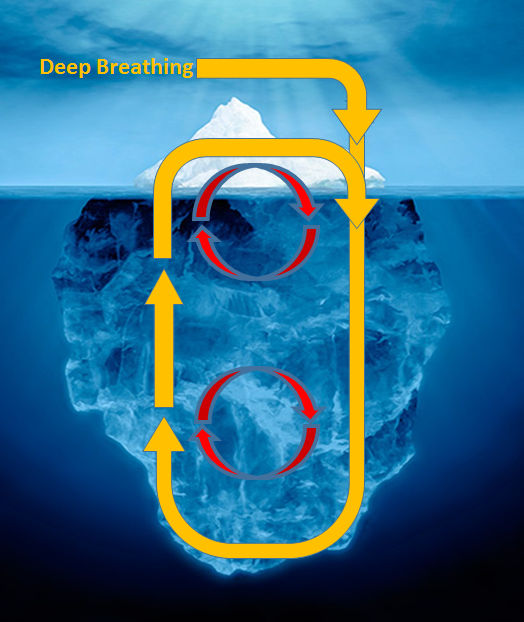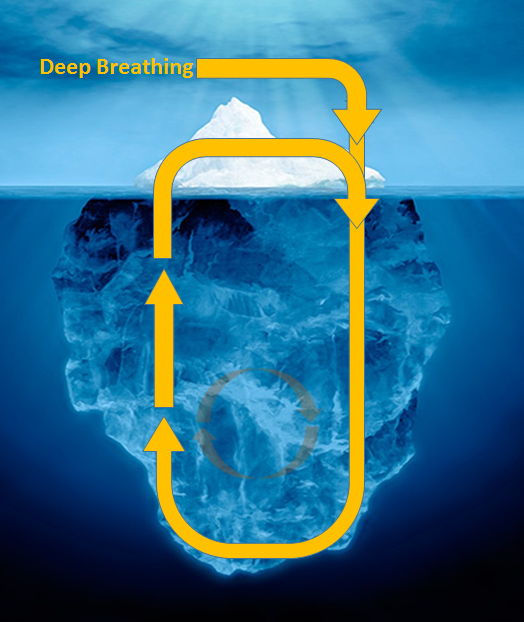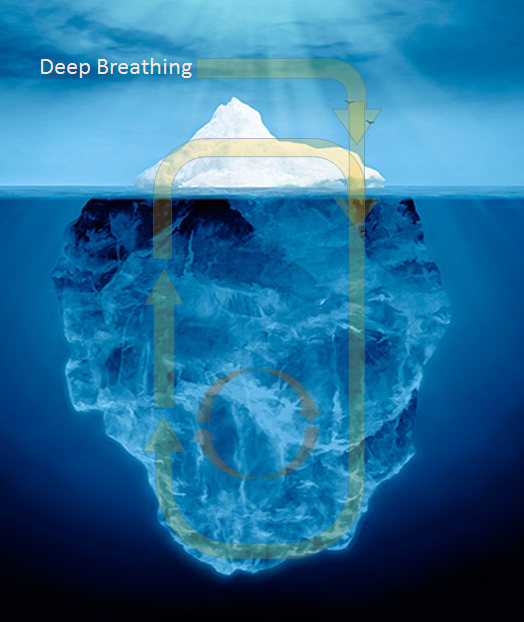Note: pdf version of this article can be downloaded here
|
"I have learned from experience that the greater part of our happiness or misery depends on our dispositions and not on our circumstances."
~~Martha Washington
|
Introduction
The process of cultivation starts with the preparation of the ground, planting the seed and then nurturing the sapling that sprout to become a full grown plant and then a tree. But the cultivation of compassion is different than cultivation of produce.
Is it similar to the cultivation of the taste of honey? That is easy. All you need is exposure to it; the first experience. The result is always sweet and pleasant. But you cannot have too much honey or your mouth is too sweet too much of the time. You get tired of it. You may also develop diabetes.
Is it then similar to the cultivation of the taste of beer? The first experience of beer is invariably that of bitterness. If you do not turn away from beer after the first experience and try it again, you may start liking it. If you do not like it the second time also, you may start liking it the third time. There is a good probability that you will never return to tasting beer if you do not like it the first time, or the second time, or the third time. When you start liking it, you want to drink it over and over; the pleasantness of the resulting feeling pulls you towards it again and again. If you are not careful and lack the discipline to moderate the consumption of beer, its transitory high accompanied by an unpleasant hangover and its destructively addictiveness which starts to hurt and hurt you real bad. Then you wish that you had never tasted it.
Cultivating compassion is the cultivation of the taste of compassion. It is both like and unlike cultivation of the taste of honey and beer. The first experience may be sweet like that of honey or it may be bitter like that of beer.
If the first taste is and pleasant and sweet like that of honey, you want to keep experiencing it over and over. The taste of compassion, unlike that of honey, stays sweet and pleasant for ever without the unpleasantness of being too sweet. And it does not cause diabetes. It is unlike that of honey in its negative long term effects.
The first taste of compassion can be bitter like that of beer. Being compassionate is accompanied by a feeling of self-sacrifice. It is also accompanied by a feeling of self-fulfillment. Overall taste of bitterness or sweetness depends upon the relativity of the two feelings. Once power of the resulting feeling of self-fulfillment is tasted, you are hooked to it. You want to repeat that feeling forever and ever. Compassion is addictive like beer in its high but without its being transitory, hangovers and destructiveness.
Honey and beer are things. What is compassion? Compassion is a heartfelt feeling that seeks expression. Love too is a heartfelt feeling. Love and compassion are compatriots: perhaps one leads to the other. They both result from an implicit feeling of connectedness or oneness through a common ground of the parties involved. Universal love and compassion results from the feeling of connectedness and oneness of all beings in the universe through an explicit realization of the common ground of the universe. What and where is the heart where they originate?
To examine this question, let us look at what is a human being and how (s)he functions. It is generally understood that we humans are an integrated whole comprising of a large number of principles starting from the extremely subtle imperceptibles within to the perceptible gross body without. For the sake of understanding, we group the large number of principles in three categories of body on the concrete and macro scale exterior, spirit in the causal subtlest core, and mind as the neither gross nor subtle micro scale in the middle. The gross body is perceptible to everyone, the mind is visible to our own selves only and the spirit is invisible to everyone including ourselves. Some of us don’t believe in the spirit; whether you believe in the spirit or not is immaterial to the current discussion.
The grouping of principles called the mind is further classified into the sensory faculty located immediately on the interior of the body, next comes the set of principles called the ego, and then comes that of the intellect located just around the outside of the spiritual core. The subtlety of the integrated whole and each of the five groups of principles increases progressively from the body on the outside to the spiritual core within although each one with five discreet names may give the impression of being homogenous through their respective extents.
Let us now examine their functions in running our behavior in the outside world. Our body has got five organs of cognition and five of action. The sensory faculty is the inner driver of both perception and action. It is comprised of five senses of cognition and five of action. The cognitive senses take the information from the external organs of perception to the mind within. This input of information is called a stimulus. We are built in a way that we have to respond to every stimulus. Howsoever, our mind process this information, it creates a response which is signaled outward by our active senses to the external organs of action for execution. The sensory faculty thus communicates and liaises between our inner and the outer.
Interaction between the outer and the inner worlds is well recognized as the role of our sensory faculty. However, it has another important role which is generally overlooked. Our mind is not only responsible for running our behaviour in the outside world, it also is responsible for running our inner physiological and psychological functions that not only support our lives on a 24/7 basis, but also comprise our lives:
-
On the physiological side, the sensory faculty is responsible for communicating the information about the state of our physiology to the control centre of the body (our brain) and the motor signals from the control centre to various physiological organs to keep them running well in order to sustain the body. We generally overlook crediting the sensory faculty for this inner working of our life support systems to keep us alive day in and day out.
-
On the psychological side, our memory is an important source of sensory traffic. Our sense experience of the external world leave their impressions in the memory. The impressions may be of pleasantness, unpleasantness, or of fear. The storehouse of impressions lead to sensory traffic in the following three ways:
-
If an impression happens to be pleasant, the urge to repeat and relive the associated experience sends the signal of a phantom stimulus through the sensory faculty seeking a response. If the conditions are favourable, the repetition of the experience materializes otherwise the urge remains unfulfilled and we keep on hankering for it. In its unfulfilled state, it keeps generating phantom stimulus signals repeatedly untilled quieted temporarily by a brief satiation.
-
If an impression happens to be unpleasant, the urge to avoid the associated experience keeps on sending phantom warning signal through the sensory faculty of a real or imaginary threat of the associated experience or its likes. Such urges define our revulsions which become nightmares preventing sleep at night.
-
We are all afraid of death; death is our biggest fear. Survive we must. In addition to the threats to survival, we are afraid of getting what we want to avoid, and not getting what we want to get. Our fears keep generating phantom stimulus signals through our sensory faculty seeking responses in terms of avoidance of hostile and threatening situations.
The sensory faculty communicates directly with our ego which receives the outer and the inner stimulus information. What is the ego? It is the storehouse of all the experiential logic developed from our prior stimuli and responses in running our life in the exterior as well as the interior world. Based upon this experience, the ego determines the actions to be taken in response to external as well as internal stimuli.
Beyond the ego lies our intellectual faculty the purpose of which is to be aware, to be conscious, know, deliberate, consider in general, consider alternatives, consider related issues, consider consequences, think, discern, determine, decide and will a response appropriate to the stimulus in it’s the prevailing context.
Those who believe in the spirit think that it is our root cause, our causal principle at the core of our very being. It decides the nature of our being, the shape of our mind, body and our predispositions when we begin our lives. It also is considered to be the source of our intuitions and ideas which we cannot credit our mind. Everyone including those who believe or do not believe in spirit, are capable to choose how to behave, whether to think before we act or run with the flow of nature and let things happen. This article is about our disposition and capacity to make such choices.
Let us now consider the nature and characteristics of the various faculties.
-
The sensory faculty in general transmits the stimulus information to the ego. In some particular cases, it may by itself decide a response and send it back to the inner or the outer world for action. These responses are called reflex responses.
-
The ego examines the stimulus for an associated immediacy or urgency. There may at times be emergencies associated with a stimulus such as threats to our very survival. If the stimulus requires and immediate response, the ego generates it by itself and sends it back to the outer or inner origin of the stimulus. It can do so because it has instantaneous access to a part of the database of prior experience, stored in conscious layers of the memory, to determine the response. No deliberation is involved in this response. Such a response is instantaneous and is classified as reactive, instinctive or emotional. If the speed of the incoming stimuli is high, ego has no time to involve the intellect in deliberating as response, because the intellect cannot act fast enough. In such a case, the situation demands that the intellect lies unused and waiting to be called upon to act. In such situations, the work load of the sensory faculty and the ego is too high to seek help from the intellect. The resulting responses are then quick and dirty.
Because the intellect is not involved, we do not become aware of the stimuli received and the responses generated. We do things of in a state of unawareness. The behaviour of which we have no awareness is be classified as autonomous in contrast to its opposite which may be called conscious, volitional, willed or premeditated. Whether something that happened just happened or was premeditated has a big bearing in our criminal justice.
-
When the ego decides that a stimulus does not demand an instantaneous response, it is sent to the intellect for deliberation to generate a conscious and considered response. The response is passed to the ego to be passed down to the sensory faculty to communicate to the active organs for implementation. The deliberation of the intellect may be based upon the database of prior experience stored in the fast retrievable conscious memory, or the slower sub-conscious or the slowest unconscious memory depending upon the degree of urgency required.
-
It must be pointed out the body and each human faculty enjoys a degree of freedom. The will arrived at the level of the intellect if not binding upon the ego. The ego may accept it as such or negotiate reconsideration by the intellect. The same principle of freedom applies at the level of the sensory faculty and also the body.
-
Those who believe in spirit may think that the spirit is the source of ideas totally unrelated with any of prior experiences. Our prior experiences guide us in the determination of our behaviour. The memory of some of those experiences lie in the instantaneously accessible surface of our memory banks, some in the not that instantaneous inner layers, and some buried deep down in the unconscious layers hard to access without appreciable focused search. What guides our response in a situation we never ever experience before? Those who believe in the spirit may say that it guides in such situations. Those who do not may say that there is nothing that have not experienced at some time or the other in our biological existence. Isn’t life an unbroken chain of biological existence from the time life started on this planet? We do not really know and understand the whole story of life and resort to belief when things get too subtle.
It is relevant to relate the psycho or psycho-spiritual structure of being human with the modern neurophysiological structure.
In today’s scientific understanding, our central nervous system is the physiological correlate of our mind with the Individual faculties of the mind having their physiological correlates in the central nervous system.
The function of sensory faculty is performed by the nerves. Nerves are of two types: the sensory nerves and the motor nerves. The sensory nerves perform the function of the cognitive senses in sending information to the brain and the motor nerves perform the function of the active senses in taking the response signals from the brain to their destination, muscles for behavior in the external world and inner organs of the body to run inner physiological or psychological functions.
Some of the information and response signals are somatic while the others are autonomic requiring somatic and autonomic nerves. Somatic responses are generated by our brain in answer to our stimuli from the external world of which we are generally aware. The autonomic responses are generated in by the brain in answer to the information sent from our inner world by our life support organs in our body or our conscious or sub-conscious memory of past experiences. We are completely unaware of the physiological stimuli to which our brain must respond in order to exercise proper control on our life support systems for us to survive. We may be partially conscious or unaware of the phantom stimuli originating from our memory. Our behavior in the external world is determined by the flow of signals in our somatic nerves and the survival of our body depends upon the flow of signals through our autonomic nervous system.
The autonomic nervous system have two divisions, one is called sympathetic and the other is called parasympathetic. The sympathetic division of the autonomic nervous system is activated when immediacy and urgency are required to run things at a fast clip and the parasympathetic division is activated to calm things down when time is not of essence.
Let us now turn our attention to the structure of the brain. The brain exercises control over our external and internal behavior using two of its functional regions.
One such region is called the limbic brain which is located on top of the spine to which the nerves directly connect. There are various anatomic parts included in the limbic system the most important of which are the two amygalae. The limbic system in general and the amygdale in particular are responsible to deal with time sensitive emotional and instinctive stimuli requiring immediate and urgent responses.
The other significant region of the brain is called the neo-cortex. The function of the neo-cortex is intellectual in nature to think, know, understand, consider, discern and decide. This is a slow acting function needed only when immediacy and urgency of time is not an issue. Consciousness, mindfulness, awareness, sense perception, language, love and compassion are also in the domain of the neo-cortex. Only mammals have the neo-cortex and it is present in the human brain in its most developed form. A characteristic of female mammals is to nurse their offspring with milk produced by their mammary glands out of love for the new born.
The nerves wisely connect to the limbic brain where the motor nerves terminate while the sensory nerves connect through it to the neo-cortex so the limbic brain can respond before the neo-cortex. At times the limbic brain responds even before the neo-cortex becomes aware of the incoming stimuli. Termination of the motor nerves at the limbic brain enables it to negotiate the response generated by the neo-cortex with a power to veto the considered response generated by it by failing to transmit the response to the motor nerves.
Thus the limbic brain acts as the physiological correlate of the ego and the neo-cortex that of the faculty of the intellect. The slow intellectual activity of the neo-cortex necessarily slows our behavior down by activating the parasympathetic division of our autonomic system and reducing the activity of the sympathetic branch. On the other hand, fast instinctive and emotional activity of the limbic brain increases the activity of the sympathetic division of the autonomous nervous system and decreases that of the parasympathetic. The activity of the limbic brain is associated with the activity of the sympathetic division of the autonomic nervous system and that of the neo-cortex with the parasympathetic division.
Human condition is such that we are by and large predisposed to connect with our limbic brain much more than to the neo-cortex. Our sensory load of rapid stimuli demanding quick response keeps the limbic and sympathetic activity at a high level with accompanying reduction of the parasympathetic activity. This is so primarily because of the relationship of the limbic brain with the inner stimuli from the instinctive autonomous physiological life support functions and our hankerings, revulsions and fears resulting from our pleasant, unpleasant and painful experiences in the physical world.
What is the problem if we have a high limbic activity resulting in high sympathetic activity? High sympathetic activity is what stresses us out. On the other hand, involvement of the neo-cortex increases the parasympathetic activity and has a calming effect which reduces the stress. Both the feelings of stress and of calm are biochemical in nature: sympathetic activity causes the release of stress hormones in our bodies and parasympathetic activity causes the release of rest and digest hormones. These chemicals accumulate in our bodies and their relative proportion determines how the neurons in our brains connect which decides our predisposition to behave thoughtfully using our neo-cortex or in an autonomic fashion using our neo-cortex.
The brain is not the final authority that decides our behavior because we can decide to alter the neural circuits which predispose it in its choice of the limbic brain or the neo-cortex in response generation. It was once considered that the neural circuits once developed were there forever. Modern research has conclusively shown that brain circuits are not hard wired but modifiable by altering the hormonal chemistry of our bloodstream. And we can train our brains to do that. Thus our brains can reprogram themselves if we so wish. Neurophysiology does not attempt to answer the question of who, what and where that “Real I” is that can have the brain reprogram itself.
Each one of us has seven endocrine glands located along the spine; six are common to men and women and one different. These glands secrete specific hormones and the mix of the different hormones define the neural circuitry that the brain uses to generate responses to different stimuli.
Simply speaking, two types of hormones are relevant in the current context, the first type are what keep us engaged in quick and dirty mindless activity, commonly called stress hormones and the other that keep us calm and collected, called rest and digest hormones. The relative proportion of the two expressed as a ratio, stress hormones/rest and digest hormones, is significant in determining how the neural circuitry predisposes a brain to respond. Generally speaking, if this ratio is low, time is of less importance and the neo-cortex is likely to be involved in generating a thoughtful response. On the contrary, if the ratio is high, the limbic brain generates a quick response without any thought being given to it.
This predisposition can of course be over-ridden by the activity of the nerves system. If the brain is predisposed to take it easy and an urgent situation causes high activity of the sympathetic sensory nerves, the limbic system will jump into action to generate a fast response through the sympathetic motor nerves. On the contrary, if the brain is predisposed to respond quickly and the stimulus is not of any urgency, the sensory signal will flow through the parasympathetic nerves, the limbic brain will step aside and the neo-cortex will be permitted to generate a considered response and send it through the parasympathetic motor nerves.
How then can we choose to have the program reprogram rewire its neural circuitry for a considered behavior? The best answer seems to be that we take the time to train the brain to use the neo-cortex in running the activity that it has runs any way on a 24/7 basis. What is that activity? Our life support system has to run 24/7. We have to breathe, our blood has to circulate in our arteries and veins, the heart has to beat, food has to metabolize, etc. These activities generate a lot of nervous traffic and the brain has to continuously deal with it. The faster the speed of these autonomic activities, the more the sensory load and more the limbic activity and the more the activity of the sympathetic nerves. On the contrary, the slower the speed of these autonomic activities, the lesser the sensory load and the more the activity of the parasympathetic ones.
Activity of the sympathetic division of the autonomic nervous system is known to cause the endocrine system of glands to tip the hormonal balance in favor of stress hormones by increasing their secretion. On the other hand, the activity of the parasympathetic division is known to cause the secretion of the rest and digest hormones. This understanding leads to a strategy of consciously training the brain to program itself for a predisposition of neo-cortical involvement in running conscious behavior. The strategy lies in conscious practice of running a normally autonomic life support function at a rate less than its ordinary rate.
Breathing is an essential life support function running 24/7 that lends itself to be used in the suggested manner. It can be used by itself or as a part of your daily meditation. This is perhaps the reason that ancient wisdom traditions worldwide use slow and rhythmic breathing in a posture conducive to maximizing the lung capacity as the physiological base of meditation.
Conscious focus on a subject of thought involves the use of the neo-cortex. If the focus is uninterrupted by any internal and external distractions, the limbic activity is eliminated except for the autonomic body functions which must go on to sustain life. We can learn even to minimize the limbic requirements of the autonomic body functions if we combine with focus on an object of thought a practice of regulated deep breathing; breathing normally being an autonomic body function run by our limbic brain, including it in our conscious regulation further reduces the limbic activity. It is the activity of the limbic brain excluding that of the neocortex that keeps the nervous system in a state of excessive sympathetic agitation typical of our human condition which keeps us fragmented.
Our ancient seers prescribed this heritage of a comprehensive strategy to deal with our human condition of selfishness that keeps us fragmented. They experientially understood the connection of the body and the mind and used the body to transform the mind by attenuating the ego. The limbic brain being the physiological correlate of the ego, attenuating the ego amounts to decreasing the activity of the limbic brain to give the neocortex a chance in participate in life. Attenuating the ego unlocks the mind opening it up for undistracted one pointedness which completely silences the ego (activity of the neo-cortex in the state of cessation of the limbic brain). Maintenance of the state of one pointedness leads further to silencing of even the neocortex (intellect) amounting to a complete inner silence in which one experiences the total mystery of the unthinkable Absolute, the boundless fountain of love and compassion.









